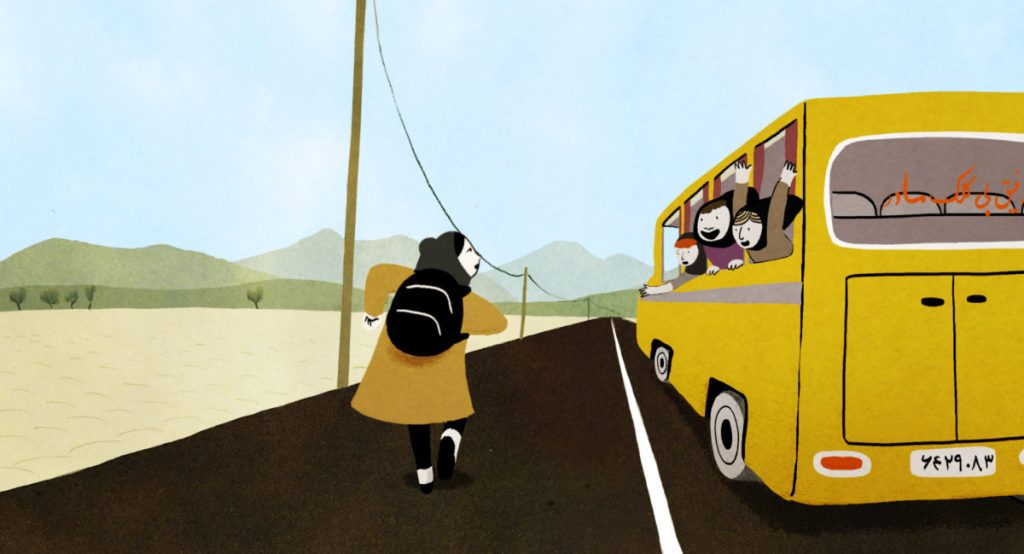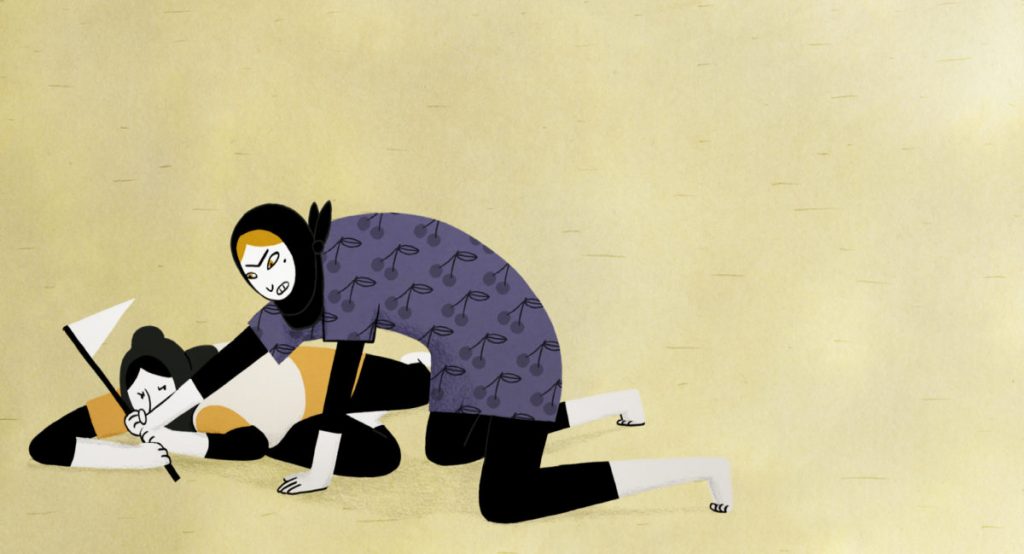Breakfast with Beach Flags
An interview with Sarah Saidan, director of Beach Flags
Your name is Sarah Saidan and one of Beach Flags women is Sareh. Do you feel close to her or to the main character, Vida? Are they like parts of yourself, of your own story? Are you Iranian too?
I am Iranian and I have lived almost my whole life in Iran. I have met many Sarehs and many Vidas. It’s them who inspired me to make this film.
I grew up in a city with a family who supported me and my desires, so I cannot say that I feel close to Sareh.
Sareh trains as a lifeguard. One can’t help thinking about the parallel with “saving lives” meaning. Do you think Iranian women need to be saved, or to save themselves?
In fact Sareh works in the rice fields, she is not a lifeguard, just a simple village girl who will soon be forced to marry an old man. One day the coach sees her running very fast on the road and asks her to join the team, Sareh had no idea about this game or competition, but later she understands that this can save her life.
I tell the story of two girls, not all Iranian women. I chose to write about an athlete because they face lots of problems and limitations which many don’t know about.
What is fiction? In the film you tell that women’s presence is restricted in official competitions which is a true fact, what about the attitude toward work which is depicted and the place of women in the society?
I am just a film maker and it is not my field to talk about womens social problems. I just heard that women swimmers don’t have the right to participate in international aquatic competitions and that shook me. I just wanted to talk about it, and because I am an animation film maker I made a short animation about this. It is obvious, we still have a long way to equality.
Beach Flags deals with human relationships in two diametrically opposed human behaviors: competition and solidarity. Did you try to create a specific effect or defend a point of view regarding the balance between these two aspects?
It’s about humanity. Because in the end that is what matters. The happiness that gold medals bring are temporary.
The script for Beach Flags is complex, delving into Vida’s intimacy and even into her dreams. When you directed Beach Flags, did you try to make us dream and do you believe reality and dream can join in the end?
The main character is Vida who is a lifeguard. Her dreams reflect what is never said aloud but makes part of the reality of her life. Her dreams are what she feels.
Beach Flags‘ animation is very sensitive and well-produced. It made me think about the long feature Persepolis (directed by M. Satrapi & V. Paronnaud). What are your inspirations in Cinema? Are there good schools in Iran for animation? Are women allowed to attend and considered equal to men?
The graphic style of the film could be influenced by artists that I like a lot, that is not a surprise. I am a fan of simplicity in the image, I love Toril Cove’s films for example, there is a very touching story behind her simply drawn characters.
In the University of Art in Tehran, we have animation as a masters degree, I studied graphic design and animation there. I did two little films with tiny budgets. Unfortunately like many other countries there is not that much funding for animation films.
How many were you in the team to draw Beach Flags and how did you share the tasks? How long did you need to create the entire visual identity?
I did the graphics of the film and character design. My friend Chen Chen worked on the storyboard with me, Jean Bouthors did all the backgrounds. Then we had two animators for the production, Eloic Gimenez and Jumi Yoon. Later Lizete Murovska and Armelle Mercat helped me with the shadows which were drawn on paper. After that, 5 or 6 people assisted me with the coloring, and then there was the compositing (2 people), editing and the whole sound and music, so you see many many people were involved. It is hard to name them all. I chose each one of these people by the work they had done before, many of these people are animation film makers themselves. It is hard to separate the time we spent on images, because we work at the same time on script, music, etc. so I cannot separate it. The film took me 2 years.
Did you record the voices before working on animation? What about the music? How did you work on sounds and during which part of the creation process?
We worked on early versions for the music while doing the animation. I had many phone conversations and have personally met the composer Yan Volsy. I wanted the score to suggest Iranian music without using actual traditional Iranian music.
Beach Flags has been produced in France. According to you, what does French production bring to Short Film that no other would?
For me it was the first time I could work with a production company so I can’t compare. I think that, whether it is in France or anywhere else, it depends on who you produce the film with. It was a good experience for me because I have worked with a very good producer who had trust in me, we got everything we needed to make the film and I was free to choose with whom I wanted to work.
Finally, have you screened Beach Flags in Iran yet, and how is it received? Do you think it will be received similarly in Iran and France?
I haven’t submitted the film in Iran yet but I am very curious to discover the women athletes comments about Beach Flags.
I doubt that it could be screened in the Tehran animation festival. But then you never know with Iran!
Beach Flags was screened at the national competition F5 and in the SCO programme in 2015.










